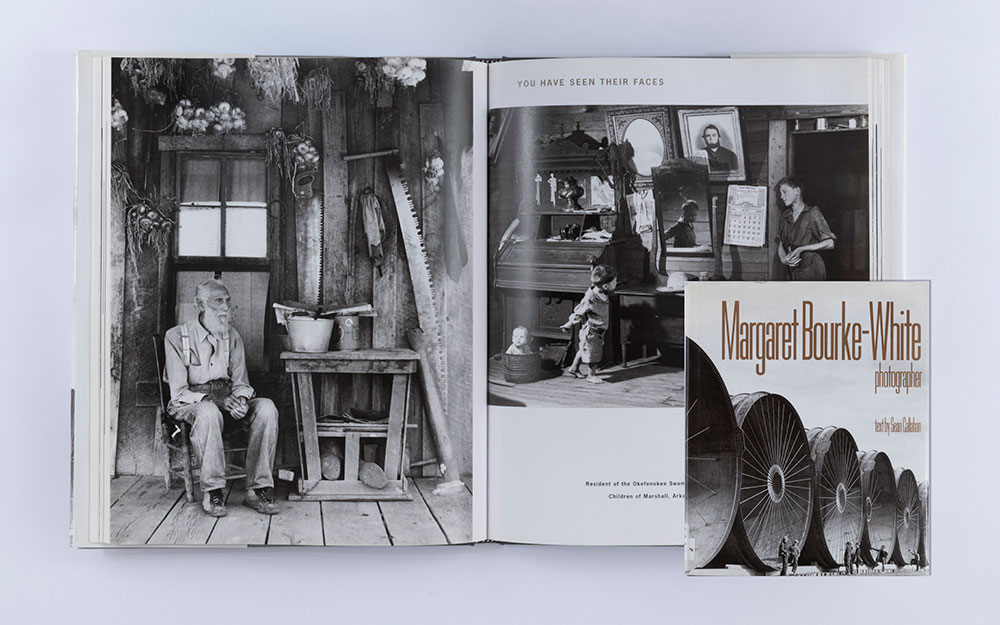Margaret Bourke-White: Photographer

Bourke-White, Margaret (fot.); textos de Sean Callahan. 1998.
Margaret Bourke-White: Photographer. Boston: Little, Brown and Company.
Tinha conhecimento que Margaret Bourke-White é considerada uma das mais importantes fotógrafas do século XX?
Margaret Bourke-White (1904-1971) foi uma fotógrafa americana que deixou um legado muito importante na história da fotografia e tornou-se um símbolo do fotojornalismo americano do século XX.
Em 1930, foi a primeira repórter fotográfica estrangeira autorizada a documentar fotograficamente as instalações industriais soviéticas durante cinco semanas numa altura em que a Rússia se encontrava em plena revolução industrial e cultural.
Durante a Segunda Guerra Mundial (1939-1945), tornou-se na primeira mulher correspondente de guerra com permissão para fotografar nas zonas de combate. As imagens registadas da libertação do Campo de Concentração de Buchenwald (Alemanha) atraíram a atenção a nível mundial.
Após os conflitos da Segunda Guerra Mundial, Margaret Bourke-White ocupou o cargo de primeira repórter fotográfica feminina da revista Life. Em 1946, a fotógrafa foi enviada pela Life para a Índia e Paquistão para documentar a Partição da Índia. Em 1949, esteve na África do Sul a registar fotograficamente o Apartheid e em 1952, fotografou a Guerra da Coreia.
Did you know that Margaret Bourke-White is considered one of the most important photographers of the 20th century?
Margaret Bourke-White (1904-1971) was an American photographer who left a very important legacy in the history of photography and became a symbol of 20th-century American photojournalism.
In 1930, she was the first foreign photographic reporter authorized to photographically document Soviet industrial facilities for five weeks, at a time when Russia was in the midst of an industrial and cultural revolution.
During World War II (1939-1945), she became the first war correspondent with permission to photograph in combat zones. The photos she took at the liberation of the Buchenwald Concentration Camp (Germany) attracted worldwide attention.
After the conflicts of World War II, Margaret Bourke-White became the first female photographic reporter to work for ‘Life’ magazine. In 1946, the photographer was sent by ‘Life’ to India and Pakistan to document the Partition of India. In 1949, she was in South Africa photographing Apartheid and, in 1952, she photographed the Korean War.